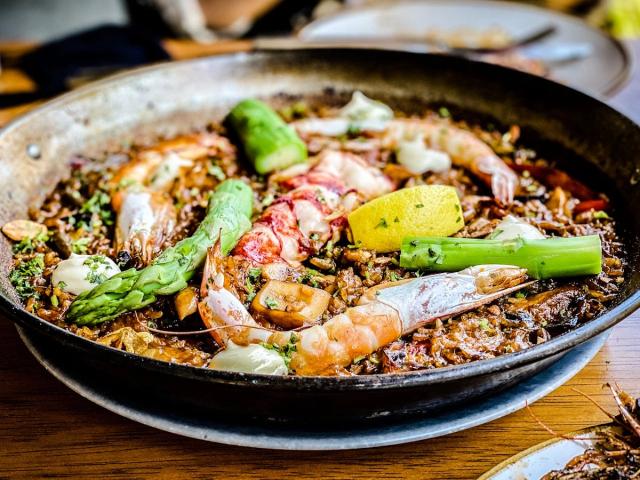A Comprehensive Guide to the Keto Diet Meal Plan for Effective Weight Loss
Discover the best tips and recipes for a Keto diet meal plan that supports weight loss and overall health. Learn how to structure your meals for success on the keto diet.

The ketogenic diet, or keto diet, has gained immense popularity for its potential to help individuals lose weight and improve health. A keto diet meal plan is designed to promote ketosis, a metabolic state where your body burns fat for fuel instead of carbohydrates. In this article, we’ll explore the benefits of the keto diet and provide you with a practical keto diet meal plan to help you get started on your health and weight loss journey.
What is the Keto Diet Meal Plan?
A keto diet meal plan is a structured eating plan that focuses on low-carbohydrate, high-fat foods. The goal is to achieve a state of ketosis, where the body burns fat as its primary fuel source instead of glucose derived from carbs. Typically, a keto diet consists of around 70% fat, 25% protein, and only about 5% carbohydrates.
By following a keto diet meal plan, you can expect your body to burn stored fat for energy, leading to weight loss and improved metabolism. Moreover, the diet has been shown to provide several other health benefits, including enhanced cognitive function, improved insulin sensitivity, and better control of blood sugar levels.
Benefits of Following a Keto Diet Meal Plan
A well-balanced keto diet meal plan offers numerous benefits beyond weight loss. Here are some of the key advantages:
1. Weight Loss
The primary reason people turn to the keto diet meal plan is to lose weight. Since the body burns fat for fuel during ketosis, this diet can help you shed excess fat and maintain a leaner physique. Many individuals experience a rapid initial weight loss, which is often attributed to the body’s transition to ketosis.
2. Improved Mental Clarity
The keto diet meal plan can also benefit cognitive function. Ketones, the byproduct of fat metabolism, are an efficient source of energy for the brain. This has been shown to improve focus, mental clarity, and overall brain function, making the keto diet popular for both weight loss and enhanced productivity.
3. Better Blood Sugar Control
For individuals with type 2 diabetes or insulin resistance, a keto diet meal plan can help improve blood sugar control. By reducing carbohydrate intake, the keto diet helps prevent blood sugar spikes and promotes more stable glucose levels throughout the day.
4. Increased Energy Levels
Once the body adapts to using fat for energy, many individuals report having more consistent energy throughout the day. Unlike the energy fluctuations that can occur with a high-carb diet, a keto diet meal plan provides sustained energy from fat, which can help you feel more energized and focused.
How to Create a Balanced Keto Diet Meal Plan
Creating a balanced keto diet meal plan requires careful planning to ensure you’re meeting your macronutrient needs while avoiding high-carb foods. Here are some tips to help you structure your meals:
1. Focus on Healthy Fats
Fats should be the cornerstone of your keto diet meal plan. Opt for healthy fats like avocados, olive oil, coconut oil, nuts, seeds, and fatty fish such as salmon. These fats provide long-lasting energy and help keep you feeling full throughout the day.
2. Choose Moderate Protein Sources
While protein is an important part of the keto diet meal plan, it’s important not to overconsume it, as excess protein can be converted into glucose through a process called gluconeogenesis, which can hinder ketosis. Aim for moderate amounts of protein from sources like eggs, grass-fed beef, poultry, and plant-based options like tofu or tempeh.
3. Limit Carbohydrates
Carbohydrates are the primary nutrient you’ll need to limit on the keto diet. Most of your daily carbs should come from non-starchy vegetables, such as leafy greens, zucchini, and cauliflower, which are low in carbs and high in nutrients. Avoid high-carb foods like bread, pasta, rice, and sugary snacks to stay within your daily carb limit.
4. Incorporate Fiber-Rich Foods
Though the keto diet meal plan is low in carbs, it’s important to include fiber-rich foods to support digestion and promote satiety. Incorporate fibrous vegetables such as broccoli, spinach, and kale, as well as chia seeds, flaxseeds, and avocados.
Sample Keto Diet Meal Plan for a Week
Creating a keto diet meal plan can seem daunting at first, but once you get the hang of it, it’s easy to stick to. Below is a sample one-week keto diet meal plan to help guide you:
Day 1:
- Breakfast: Scrambled eggs with avocado and spinach cooked in coconut oil
- Lunch: Grilled chicken salad with olive oil and lemon dressing
- Dinner: Baked salmon with a side of roasted cauliflower and sautéed zucchini
- Snack: A handful of almonds
Day 2:
- Breakfast: Keto chia pudding made with coconut milk and topped with berries
- Lunch: Lettuce wraps with turkey, cheese, and avocado
- Dinner: Beef stir-fry with bell peppers, mushrooms, and coconut oil
- Snack: Cheese slices and a few olives
Day 3:
- Breakfast: Bulletproof coffee (coffee blended with grass-fed butter and coconut oil)
- Lunch: Egg salad with mayo and leafy greens
- Dinner: Grilled shrimp with a side of broccoli and roasted asparagus
- Snack: A small handful of macadamia nuts
Tips for Sticking to Your Keto Diet Meal Plan
While the keto diet meal plan can be highly effective, sticking to it requires discipline and planning. Here are some helpful tips to stay on track:
1. Prepare Meals in Advance
Meal prep is crucial when following the keto diet meal plan. Set aside time each week to prepare your meals in advance, so you have keto-friendly options available when hunger strikes.
2. Stay Hydrated
When following a keto diet meal plan, it’s important to drink plenty of water, as your body may excrete more water while in ketosis. Staying hydrated helps with energy levels and prevents dehydration, which can lead to headaches and fatigue.
3. Track Your Macros
Use a tracking app or journal to keep track of your macronutrients (fat, protein, and carbs). This will help ensure that you're staying within the correct ratios to stay in ketosis.
Conclusion
A keto diet meal plan is an effective way to promote weight loss, improve energy levels, and support overall health. By focusing on healthy fats, moderate protein, and low-carb vegetables, you can structure your meals to achieve and maintain ketosis. With the tips and sample meal plan provided, you’ll be on your way to successfully following the keto diet and reaping the numerous benefits it offers.
What's Your Reaction?
 Like
0
Like
0
 Dislike
0
Dislike
0
 Love
0
Love
0
 Funny
0
Funny
0
 Angry
0
Angry
0
 Sad
0
Sad
0
 Wow
0
Wow
0
























































